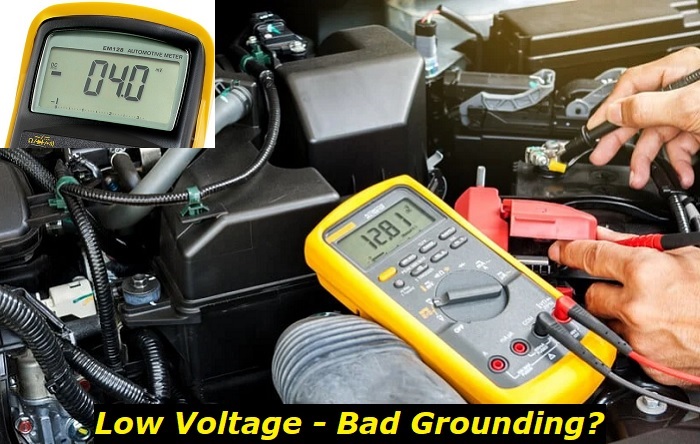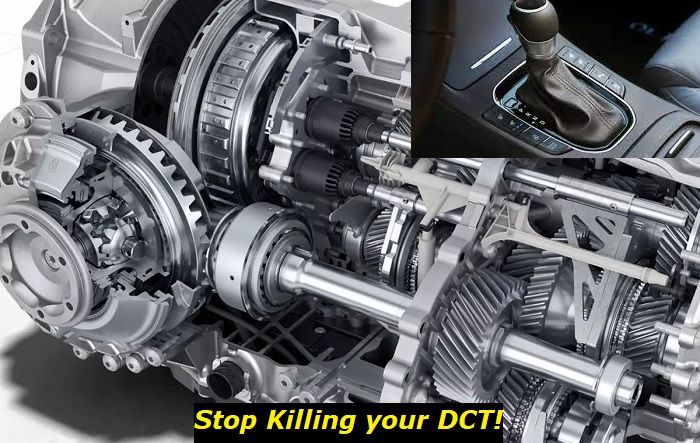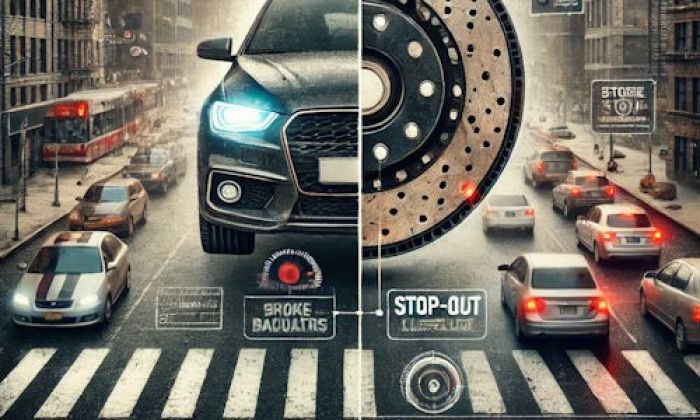Bad grounding is one of those pesky problems you are least likely to suspect is behind your car's malfunctioning. We often miss that which is right under our noses. Every vehicle's electrical circuit requires good grounding for it to operate optimally.
Ground problems highlights
- Level of urgency:high
- DIY inspection:possible
- DIY repairs:possible
- Can you drive?usually, no
- Price of repairs:$0 - $150
- If ignored:low voltage, car glitching heavily
- Ways to fix:clean ground contacts, find a good car electrician

Bad grounding is a serious problem that could cause the sensors connected to your ECU to pick up erroneous signals.
If your car's computer system seems to have a mind of its own and displays warning lights for components that are functioning properly, bad grounding is likely to blame. Inspecting your vehicle's grounding system is the best way to save time and money by avoiding replacing parts unnecessarily.
Anytime your car has problems with lousy grounding, it may result in more than one circuit going live when it should not. A good example is when lights go on without you switching them on or even switching off while you have switched them on.
Drivers who suspect that bad grounding is affecting their car will find this article extremely helpful. It will wisen you up to the warning signs that indicate a grounding problem and discuss the most common causes of poor grounding.
Common Signs of Bad Grounding
Motorists who are not sure whether the cause of their car troubles is poor grounding will be able to eliminate or confirm the problem using this list. Look out for the following symptoms that are associated with a defective grounding system:
- Flickering lights
- Erratic functioning of electrical devices
- Dim lights
- A damaged fuel pump
- Burned-out or slipping AC compressor clutch
- Irregular failure of sensors
- Hard starting
- Failure to start
- Faulty transmission or throttle cables
- A dead battery
- Failure of the ignition coil
The list is long since a faulty ground causes multiple electrical issues. Whenever your car faces problems associated with faulty ground, don't stress yourself out, as it is relatively easy to fix and diagnose faulty grounding in your vehicle. It is easy for one to diagnose and repair problems associated with grounding by making use of a DMM (digital multimeter) and other standard tools.
Do you lack the foggiest idea where your vehicle's engine transmission grounds are? Don't hesitate to consult your car's repair manual. Most car manuals provide comprehensive step-by-step directions for maintenance, repairs, and troubleshooting different problems.
Common Causes of Bad Engine Grounding
After confirming that your car is suffering from bad grounding, the next step is to diagnose the cause of the problem. It is advisable to pinpoint the problem by inspecting these aspects:
- A corroded ground battery terminal
- Damaged or loose wires or ground terminal
- Bad component repairs or installation
How To Diagnose Electrical Grounds
When diagnosing a vehicle's electrical system, you have to divide it into two sections: the first is engine ground, and the second one is body ground. Dividing the diagnosing techniques into two makes it easier to find common electrical problems and to test the accessory grounds and the starter motor ground path.
Below are essential points to bear in mind when attempting to troubleshoot your vehicles ground system:
- When inspecting your vehicle's grounding connections, ensure that the terminals are attached to a surface that is not painted. You should connect the terminals to bare metal. The leading causes of a faulty automotive ground system include: greasy surfaces, corrosion, paint, loose connections, and broken wires.
- Some vehicles use a separate wire for grounding the body. This is besides the primary battery grounding wire that goes from the battery negative terminal to the chassis. This battery grounding is mainly for headlights, electronic appliances, and other accessories.
How To Inspect Your Engines Ground
Your vehicle's engine ground is tasked with providing the starter motor with an electrical return path. A faulty engine ground is a typical challenge that often results in hard-starting or no start. The following are steps taken to test a voltage drop reading in hopes of locating unusual resistance in the path of the engine ground.
- You should begin with disabling the fuel and ignition systems to prevent your engine from starting while carrying out your tests. When you find the ignition system has a distributor, you should use a jumper wire to ground it to the engine. You can also disconnect the distributor cap and tension cable. You should also remove the fuel pump fuse if the ignition system lacks a distributor. To locate the fuse, you should consult the vehicle's user manual. It is also possible to use a remote starter switch by connecting the control circuit terminals that are located on the starter solenoid or relay to the switch.
- Ensure your digital multimeter is set to DC Volts. You should select a range that is as accurate as possible and more significant than your battery's voltage. A good example is 20 volts. You can also select the auto range function if your particular multimeter has these features.
- You should then connect the meter's redhead to your engine on a clean surface and the black head of your meter to the negative battery terminal.
- Ensure that you have someone to assist you in cranking the engine for about five seconds for you to be able to take good readings.
- When taking the readings, ensure that you get a reading of 0.2 volts or less. When you get higher readings, unwanted resistance is present in the ground circuit.
- The next step is that you should get your meters redhead connected with the main ground terminal on the end side of your engine.
- You will then repeat the two-step above by connecting your black terminal to the red lead, the main ground, and the cable to your battery post. Should you observe a reading of about 0.2 volts or less, it should be possible to locate the resistance between that point and your previous test point. Inspect for corrosion and loose or broken wires.
How to Check for Chassis Grounding
Most of your electronic modules and engine electrical components require an electrical ground. These include those in the passenger's cabin and transmission that use the chassis or firewall as an electrical ground. When you carry out these tests for undesired resistance, including the secondary ground path that is from the battery and chassis that is used in older models; consider consulting your vehicle's repair manual where you feel it is necessary.
How to Look for Transmission Grounding
Car models have firewall grounds for modules/chassis, solenoids, and sensors. It is also possible to check these grounds using your digital multimeter.
- First, inspect for voltage drop between the battery's negative terminal and the transmission. The required voltage drop is considered to be about 0.2 volts or lower.
- You should ensure that you inspect each chassis ground by recording voltage drops on each ground strap located on the transmission.
Whenever you find the straps are not in good condition, you should clean, repair, or replace the transmission grounds where necessary if the damage is too much. Ensure you remove all the grease, paint, and rust from the underground terminals and replace faulty ground straps.
Cleaning, repairing, or replacing transmission grounds is a simple task that most drivers can manage on their own. It is also advisable to remove rust, grease, and paint from your underground terminals. Finally, it is also necessary to replace any damaged ground straps.
The following are the expected values for voltage drop:
- For a connection-0.00, volts
- For a wire or cable-0.2 volts
Slow Cranking or No Cranking at all
The problem could result from a poorly grounded starter motor when you find your car is not cranking while starting or cranking the starter motor slowly. Ensure your starter motor case has a clean and tight contact with the engine. Finally, you can inspect your starter motor for voltage drop.
Advantages of Locating and Fixing Faulty grounds
A damaged engine ground can result in the battery not charging correctly, can prevent signals from getting to the computer system, can cause headlights to act abnormally, and can cause issues with hard-starting and other faults.
Whenever your engine has a lousy grounding, it can cause damage. When excess current tries to ground unsuccessfully, it tends to pick the path of least resistance amongst components in the transmission: transmission cable, wheel bearings, throttle cable, and ground wires while causing terrible damage to them.
Anytime you suffer an electrical malfunction, it is best to inspect your engine and body grounds. Try the simple procedures that can be carried out using a digital multimeter. You are advised to attend to bad grounding as soon as you notice it because it is the only way to deter the electrical problem from spreading.
Conclusion
Whenever your car is behaving as though it is haunted, bad grounding should be your first suspect. If you have trouble finding and fixing the cause of the bad grounding, it is advisable to rely on a professional mechanic for diagnosis and repair.
About the authors
The CarAraC research team is composed of seasoned auto mechanics and automotive industry professionals, including individuals with advanced degrees and certifications in their field. Our team members boast prestigious credentials, reflecting their extensive knowledge and skills. These qualifications include: IMI: Institute of the Motor Industry, ASE-Certified Master Automobile Technicians; Coventry University, Graduate of MA in Automotive Journalism; Politecnico di Torino, Italy, MS Automotive Engineering; Ss. Cyril and Methodius University in Skopje, Mechanical University in Skopje; TOC Automotive College; DHA Suffa University, Department of Mechanical Engineering






Add comment